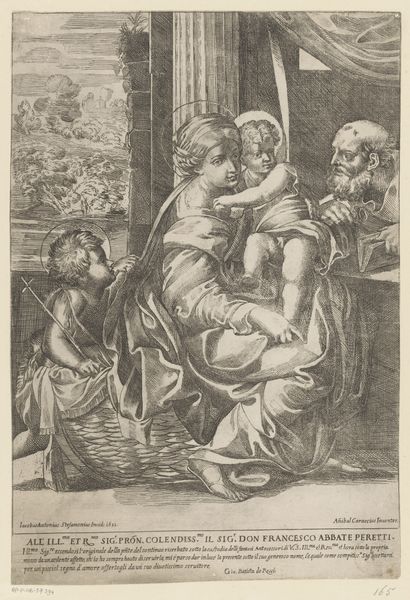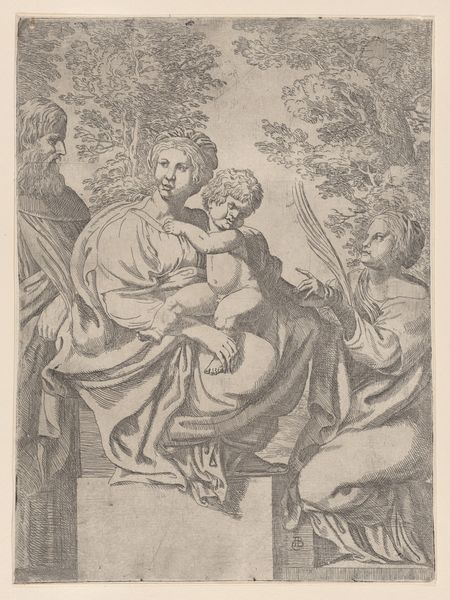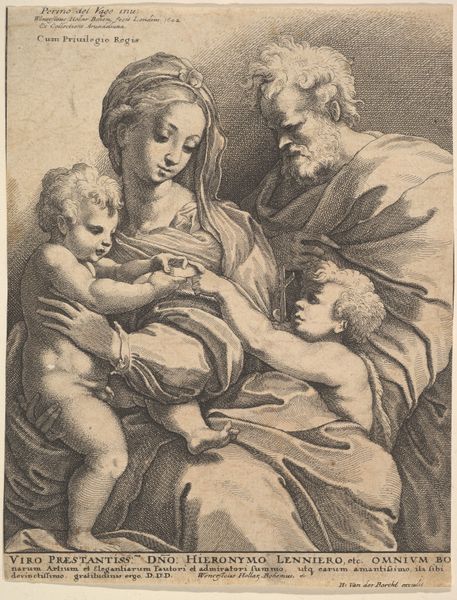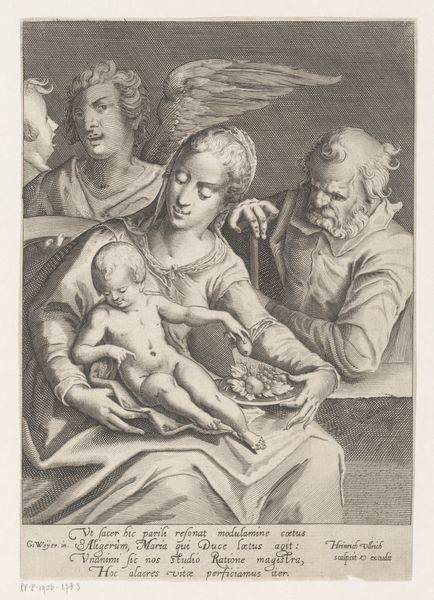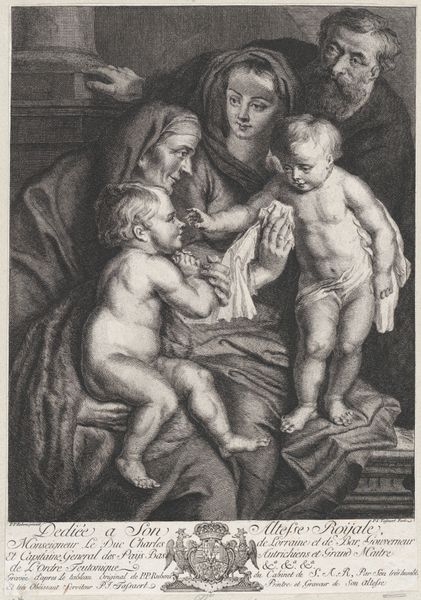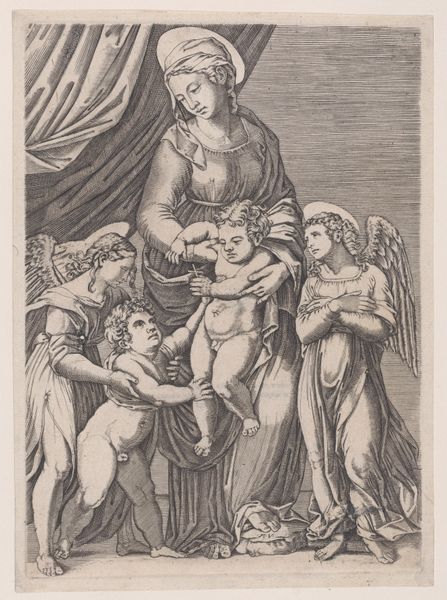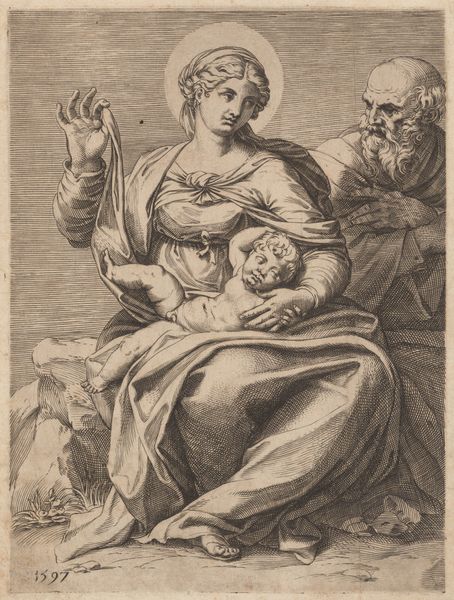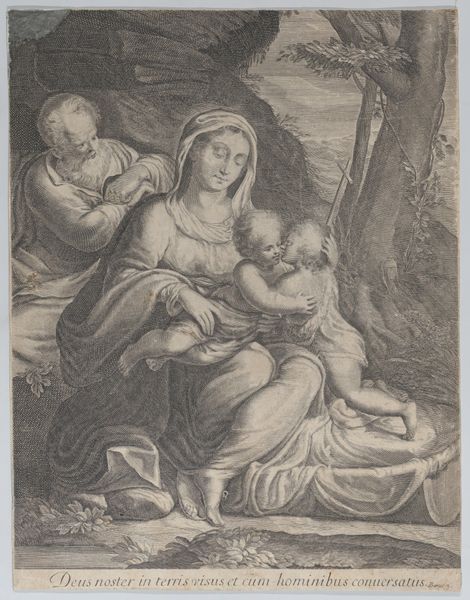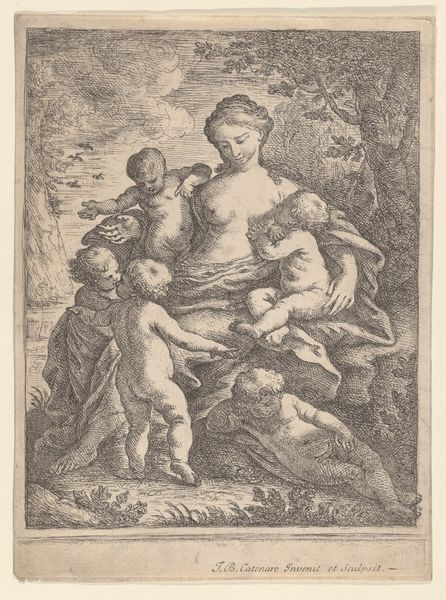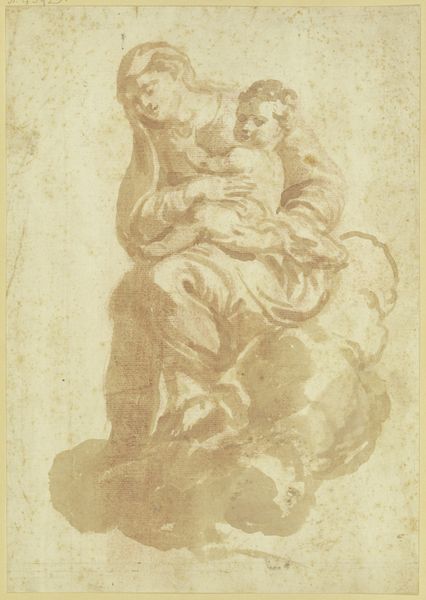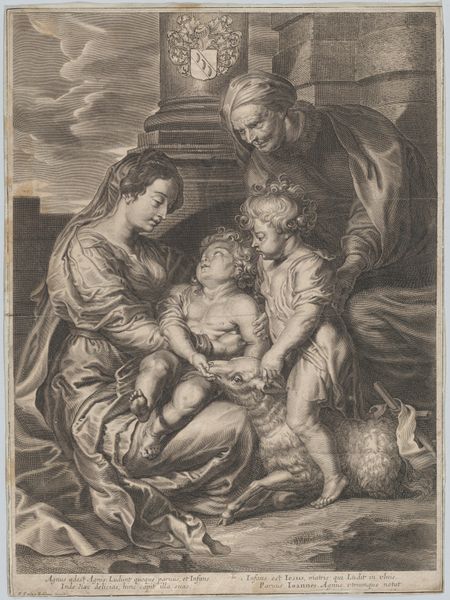
print, engraving
#
portrait
# print
#
figuration
#
history-painting
#
italian-renaissance
#
engraving
Dimensions: plate: 18 × 12.6 cm (7 1/16 × 4 15/16 in.) sheet: 18.2 × 13 cm (7 3/16 × 5 1/8 in.)
Copyright: National Gallery of Art: CC0 1.0
Curator: This engraving from Bartolomeo Biscaino, made sometime between 1650 and 1657, depicts "The Holy Family". What’s your immediate reaction? Editor: It’s… delicate. The etching technique creates these fine, almost ethereal lines that lend a gentle mood to the piece. It almost seems as though it’s been sketched in pencil. Curator: The intimacy certainly comes through. Consider the social and religious context of the time—the family unit elevated as the cornerstone of society, reflected here in this quiet scene. Note how Mary looks down tenderly, Joseph gazes at the baby with such affection. Editor: Yes, there is definitely a focus on light and shadow, and an awareness of volume in their rendering. It's like Biscaino is deliberately making it visually harmonious; for instance, the soft tonal gradations that suggest depth, creating a visual focus on the faces and the child. Curator: Indeed, and those subtle details underscore the virtues ascribed to the Holy Family: piety, love, protection. Think about how these images were circulated as symbols of hope, refuge and idealised family values at a time of immense political and social upheaval. Editor: You know, even with its modest size and limited range, the engraver has given a lot of texture and a feeling of expansiveness. The figures fill up most of the composition, and this amplifies that sentiment of family devotion. It feels contained and complete in a sense. Curator: Absolutely. And beyond the visual harmonies, let’s not forget its potent religious significance, reinforcing theological narratives but through the very real relationships represented between a mother, a father, and child. Editor: For me, the use of lines in the engraving itself is the focal point; that this medium could make those religious implications evident makes me admire this delicate interpretation. Curator: Precisely, this work functions on several levels and from different perspectives: technically impressive and, viewed within its socio-historical time frame, revealing of powerful societal influences. Editor: It reminds me how the simplest formal decisions, lines in this case, contribute to deep emotional narratives that last throughout the ages.
Comments
No comments
Be the first to comment and join the conversation on the ultimate creative platform.

